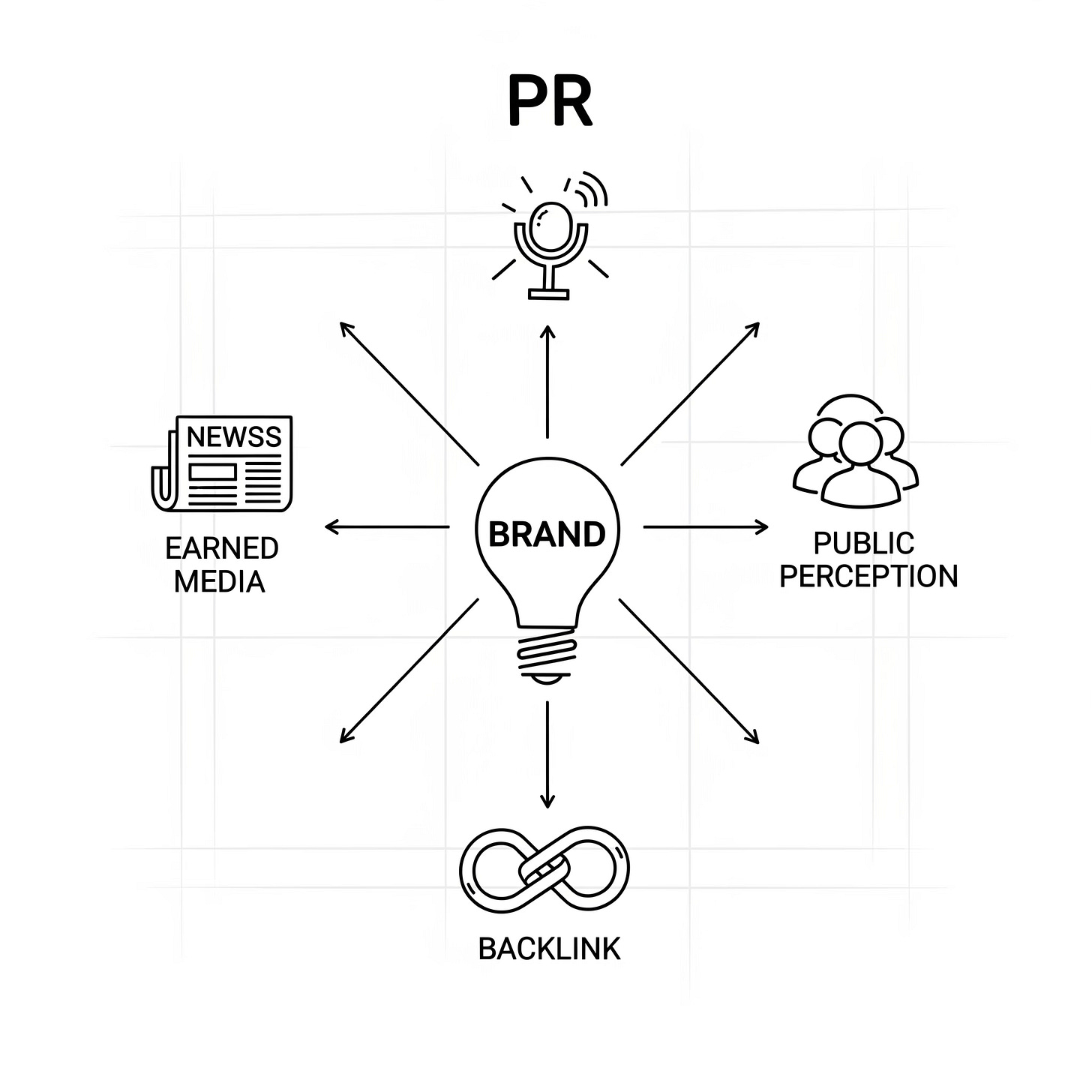Leveraging Public Relations to Enhance Your Brand Image
Beyond the Ad: How Strategic PR Builds Trust, Credibility, and Brand Power
In a world saturated with paid advertising, consumers are increasingly skeptical of messages that come directly from a brand. This is where Public Relations (PR) becomes a critical tool. Public Relations is the practice of managing how information about an individual or organization is disseminated to the public. Unlike advertising, which is a paid medium, PR focuses on earned media—getting your brand mentioned in news articles, blog posts, and other credible sources. Done correctly, PR can enhance your brand image, build trust with your audience, and position you as a respected leader in your industry.
Many businesses make the mistake of viewing PR as a reactive tool, something you only use to respond to a crisis. This oversight misses the immense proactive power of PR to shape your brand narrative and build a positive reputation over time. For any business owner, marketer, or brand builder, understanding how to strategically leverage PR is essential for long-term success. This guide will walk you through the key best practices and a "how-to" framework for using PR to build a powerful and trusted brand image.
Why Public Relations is a Core Pillar of Brand Building 🤔
Strategic PR is essential for several key reasons:
Builds Credibility and Trust: A third-party endorsement from a respected news source or industry publication is far more credible than a message from the brand itself. This "earned media" builds significant trust with your audience.
Enhances Brand Authority: Getting featured in reputable publications or speaking at industry events positions you as a thought leader and an authority in your field.
Generates Organic Traffic and SEO Value: Press mentions and articles often include a backlink to your website. These high-quality backlinks are a powerful direct ranking factor in SEO, driving organic traffic and improving your search engine visibility.
Expands Your Reach: A single press mention can expose your brand to thousands, if not millions, of new potential customers who might not have seen your paid ads.
Shapes the Brand Narrative: PR allows you to proactively tell your story, share your values, and control the public perception of your brand.
A Step-by-Step Guide to Leveraging PR 🚀
I. Step 1: Define Your Story and Goals ✍️
Action: Before you do anything, you need to know what you want to achieve and what story you want to tell.
How-To:
Identify Your Key Message: What is the most important thing you want the public to know about your brand?
Define Your Target Audience: Who do you want to reach? (e.g., tech enthusiasts, small business owners, eco-conscious consumers).
Set Clear PR Goals: Do you want to increase brand awareness, drive traffic to a new product page, or position your CEO as a thought leader? Your goals will shape your entire strategy.
II. Step 2: Build Your Media List and Relationships 🤝
Action: Identify the journalists, bloggers, and publications that cover your industry and reach your target audience.
How-To:
Research Relevant Outlets: Use tools like Google News, Muck Rack, or Cision to find reporters who write about topics related to your industry.
Follow Them on Social Media: Get a feel for the topics they cover and the kind of content they share.
Engage with Them Authentically: Before you pitch, engage with their content. Like their posts, share their articles, and leave thoughtful comments. Building a relationship first makes your pitch much more likely to be read.
III. Step 3: Craft a Compelling Pitch 📧
Action: Your pitch is your first and only chance to grab a journalist's attention.
How-To:
Personalize Everything: Avoid mass emails. Address the journalist by name and reference one of their recent articles to show you've done your homework.
Keep It Concise and to the Point: Journalists are busy. Your pitch should be short, clear, and get straight to the point.
Make It Newsworthy: Your pitch must offer a compelling, timely, and relevant story. Answer the question: "Why should my readers care about this right now?"
Provide a Clear Call to Action: Tell the journalist what you want them to do next (e.g., "Would you be interested in an interview?" or "Would you like a press kit?").
IV. Step 4: Prepare a Comprehensive Press Kit 📁
Action: When a journalist responds, be ready with all the information they need.
How-To:
Include High-Resolution Images: Provide professional photos of your product, team, and logo.
Write a Fact Sheet: A one-page document with key facts about your company, its mission, and its history.
Include Quotes and Testimonials: Provide pre-written quotes from your leadership or a happy customer.
The Power of Being Proactive and Reactive 🚀
Proactive PR: This is the core of a long-term brand-building strategy. It involves consistently sharing your story, announcing product launches, and offering your expertise to the media.
Reactive PR: This is how you respond to an event, whether it's a crisis or a breaking news story in your industry. Being prepared with a clear communications plan is crucial for managing your brand's image during a sensitive time.
By embracing a strategic approach to public relations, you can move beyond relying solely on paid ads and build a brand that is respected, trusted, and truly influential.
Is your brand's story getting lost in the noise? Visit FunctioningMedia.com for expert public relations and brand strategy services that help you craft a compelling narrative, earn valuable media attention, and build a powerful, respected brand image. Let's get your story heard.
#PublicRelations #BrandBuilding #EarnedMedia #PRStrategy #MediaRelations #BrandImage #MarketingTips #BestPractices #ThoughtLeadership #FunctioningMedia



